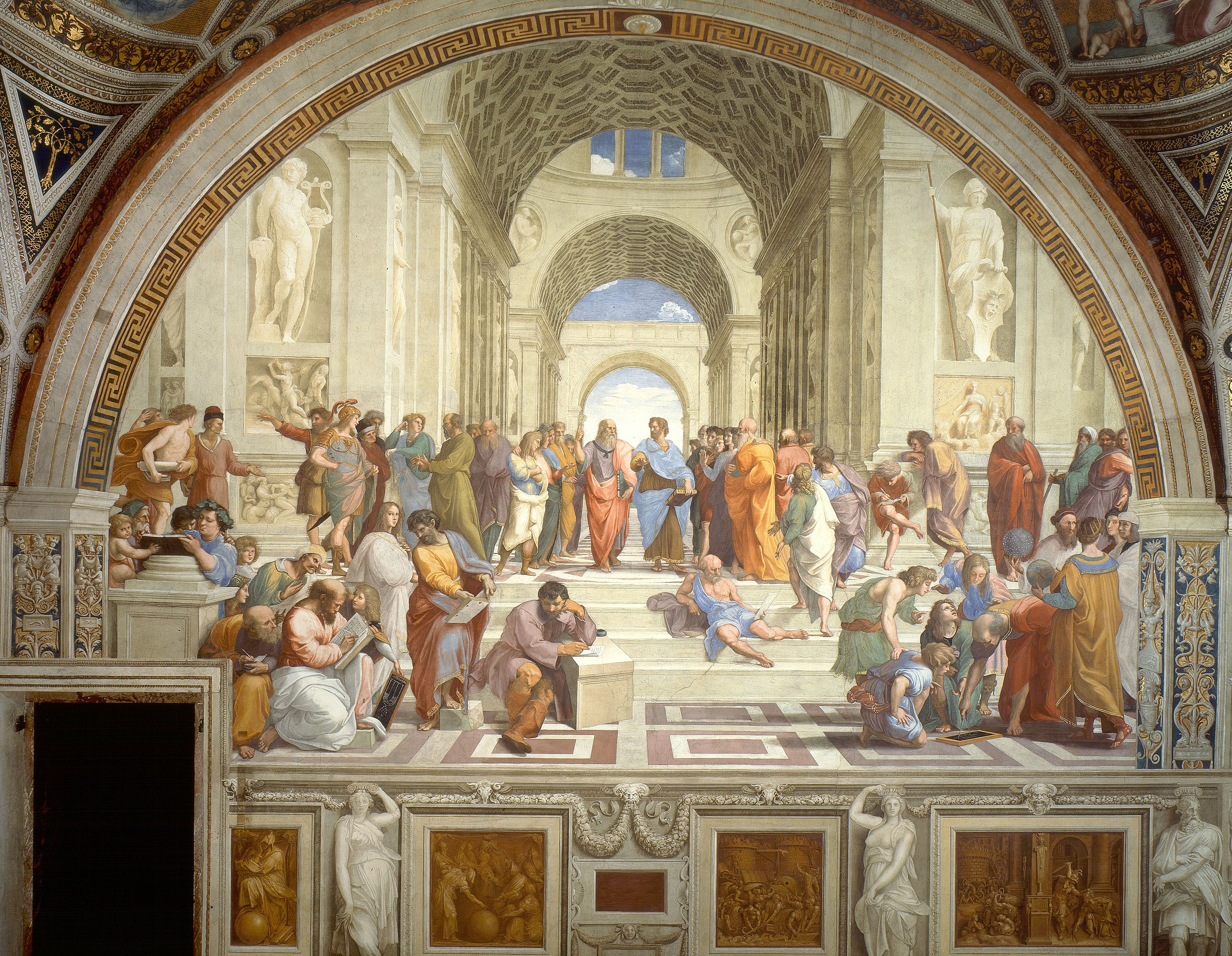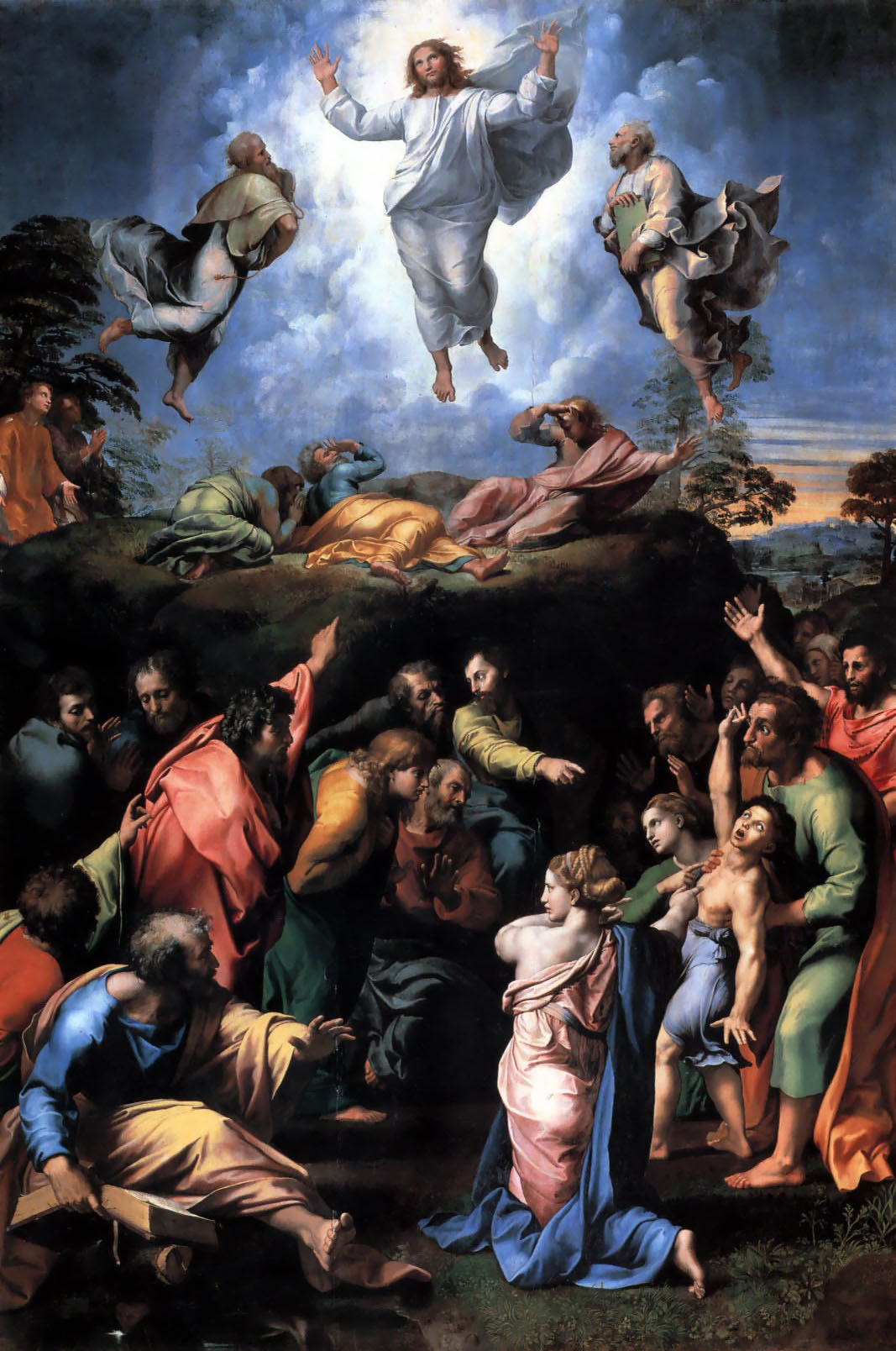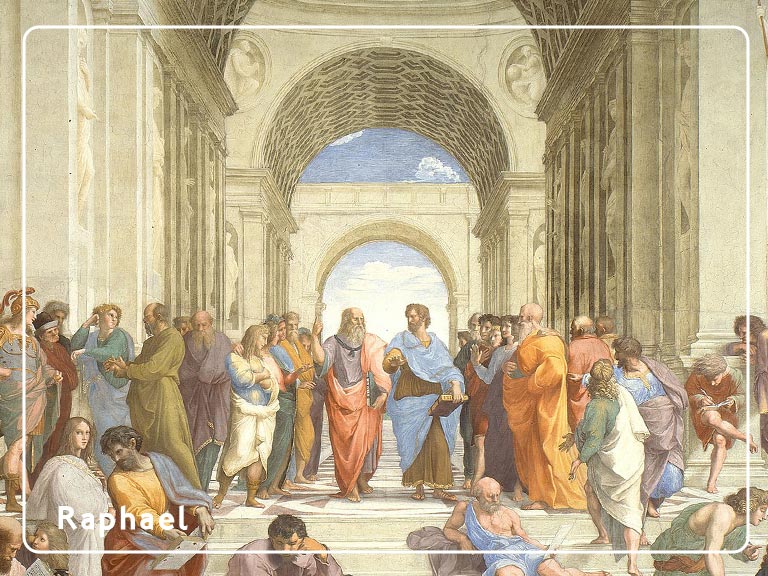Raphael, born on April 6, 1483, in Urbino, Italy, is widely regarded as one of the greatest artists of the Italian Renaissance. His extraordinary talent and artistic prowess propelled him to prominence during his short but prolific career. Raphael’s contributions to art, marked by exquisite detail, harmonious compositions, and a profound understanding of human emotion, continue to inspire and captivate audiences around the world.
Raphael received his initial artistic training in his hometown of Urbino, where he honed his skills in perspective, composition, and human anatomy. He drew inspiration from the works of Leonardo da Vinci and Michelangelo, assimilating their mastery of form and expression into his own unique style.
“The School of Athens” (1509-1511):
One of Raphael’s most iconic works, “The School of Athens,” resides in the Apostolic Palace in Vatican City, Rome. This monumental fresco depicts a gathering of renowned philosophers, scholars, and artists from classical antiquity, showcasing Raphael’s ability to imbue his subjects with life and personality. The composition and use of light create a sense of grandeur and intellectual discourse.

“The Sistine Madonna” (1512-1513):
“The Sistine Madonna,” renowned for its ethereal beauty, is housed in the Gemäldegalerie Alte Meister in Dresden, Germany. This majestic painting portrays the Virgin Mary holding the Christ child, with cherubs at her feet. The softness of the figures, the delicate colours, and the tender expression on Mary’s face epitomise Raphael’s ability to convey divine grace and maternal love.

“The Transfiguration” (1516-1520):
“The Transfiguration,” considered Raphael’s last masterpiece, is held in the Vatican Museums in Vatican City, Rome. This complex and spiritually charged composition portrays the transfiguration of Christ on Mount Tabor. The painting skillfully captures the interplay of light and shadow, conveying a sense of divine radiance. The juxtaposition of the celestial and earthly realms reflects Raphael’s profound understanding of human spirituality.

“Madonna of the Meadow” (1505-1506):
The “Madonna of the Meadow” can be found in the Kunsthistorisches Museum in Vienna, Austria. This serene and intimate depiction of the Madonna and Child amidst a gentle landscape exemplifies Raphael’s mastery of harmonious composition. The tender connection between mother and child and the idyllic setting evoke a sense of tranquility and maternal love.

Raphael’s artistic legacy extends far beyond his own lifetime. His influence can be seen in the works of countless artists throughout history, and his impact on the art world is immeasurable. His ability to infuse his paintings with human emotion, his attention to detail, and his mastery of composition continue to inspire and guide artists today.
To fully appreciate Raphael’s art, a visit to the Vatican Museums, the Gemäldegalerie Alte Meister in Dresden, and the Kunsthistorisches Museum in Vienna is highly recommended. These renowned institutions provide a comprehensive collection of Raphael’s masterpieces, allowing viewers to witness the beauty and brilliance of his work firsthand.
Raphael’s contributions to Renaissance art have solidified his place as one of history’s most celebrated artists. Through his remarkable skill in capturing human emotion, his meticulous attention to detail, and his harmonious compositions, Raphael created timeless masterpieces that continue to inspire awe and admiration. His works, such as “The School of Athens,” “The Sistine Madonna,” “The Transfiguration,” and the “Madonna.
If you would like to receive a roundup of all of our blog posts once a week to keep you inspired in your inbox, why not sign up to our newsletter. You can access our sign up at the top of our page. If you are a London Art College student and you would like your artwork featured here, drop us a line at any time.

